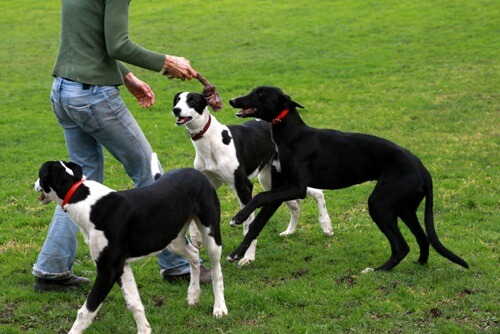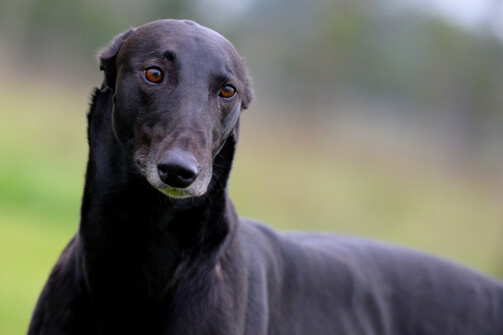
On this page you will find:
- Preventative Health Care
- Continuing to Encourage Chase Behaviours
- General Life Skills
Even though your greyhounds is not yet old enough to send to a Breaker/Primary Educator, there are things you should be doing to prepare it for racing.
Unfortunately, many owners don’t have enough hands-on input into their young greyhound’s development – relying on their Rearer to prepare their pup for the next stages in their career. Ideally, you will be supervising to make sure that critical skills and milestones are reached well before your greyhound is ready for breaking-in. This will save you time and money in the long run because your greyhound will be fit, healthy and mentally ready for the challenges of a racing career.

Things that you can do:
Preventative Health Care
Make sure that your greyhound is up-to-date with vaccinations, is wormed regularly and is eating high quality food – this will ensure they become a healthy young adult, physically ready for the demands of racing. It’s also important to make sure that any injuries sustained during rearing are seen to quickly and the correct treatment and rehabilitation is completed – get your greyhound checked by your greyhound vet if you think there are any problems. Getting in early and fixing a minor injury may make all the difference to having a successful race dog.
Encouraging Chase Behaviours
Right from the time that your greyhound is a young pup, you should be encouraging him to chase. This may be through simple chase games with a toy on a rope, through to dragging a lure along the ground at speed. Remember to encourage and reward this chasing behaviour and increase the complexity and difficulty slowly over time, through adolescence. You might even have your young greyhounds watch more experienced dogs chasing. Any training you do must not involve the use of animal material – only synthetic/artificial lures are allowed.

Life Skills
A racing dog does not just have to chase, they also need a range of life skills that are required to ensure that they are calm and confident with everything that happens around them. Getting your young greyhound used to travelling in a vehicle or trailer is important, as is teaching them to walk politely on the lead, and they need to be comfortable being housed in a race kennel even if it is only for a short time. Preparing your greyhound for these kinds of environments and activities means that they are less likely to become stressed at breaking in, making it much easier for the Breaker to handle them. If they are less stressed by the changes that they’re going to encounter, they will eat better, not lose condition, and they will have a better chance of focusing on the new skills they need to learn to become a race dog.

In general, think about everything the dog will need to be able to do and then start teaching it those skills and expose it to situations and environments. Greyhounds need to get used to the sights and sounds of the race track, they need to be comfortable with the housing and handling requirements, and need to have seen more of the world than just the rearing farm.
Although at this age the focus is on producing a racing greyhound, you also need to think about life after racing and consider the life skills the greyhound will need to become a loved family pet. Spending some time in a back yard or inside the house, walking through suburban streets, and seeing other people and domestic dogs are all just as important.

